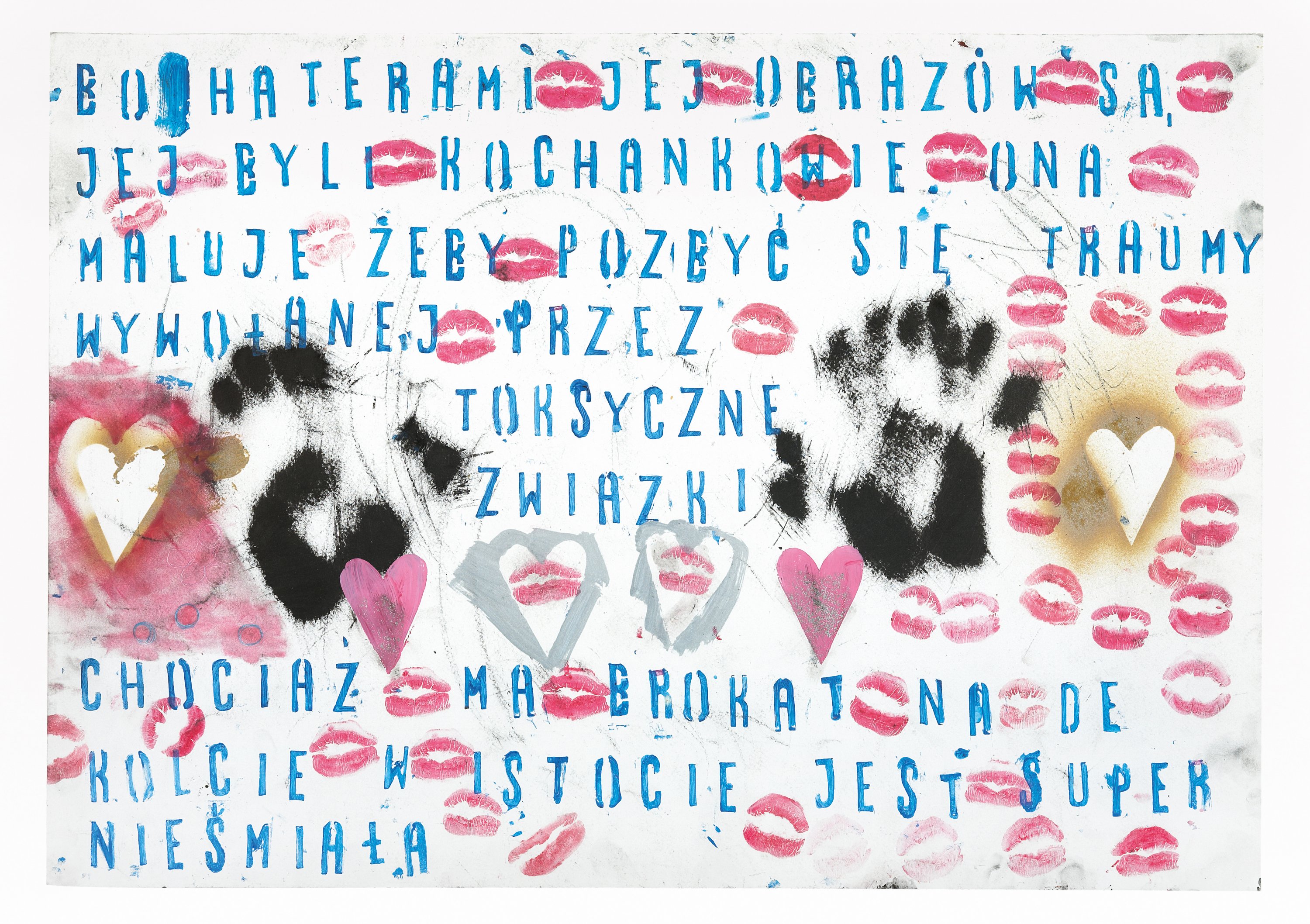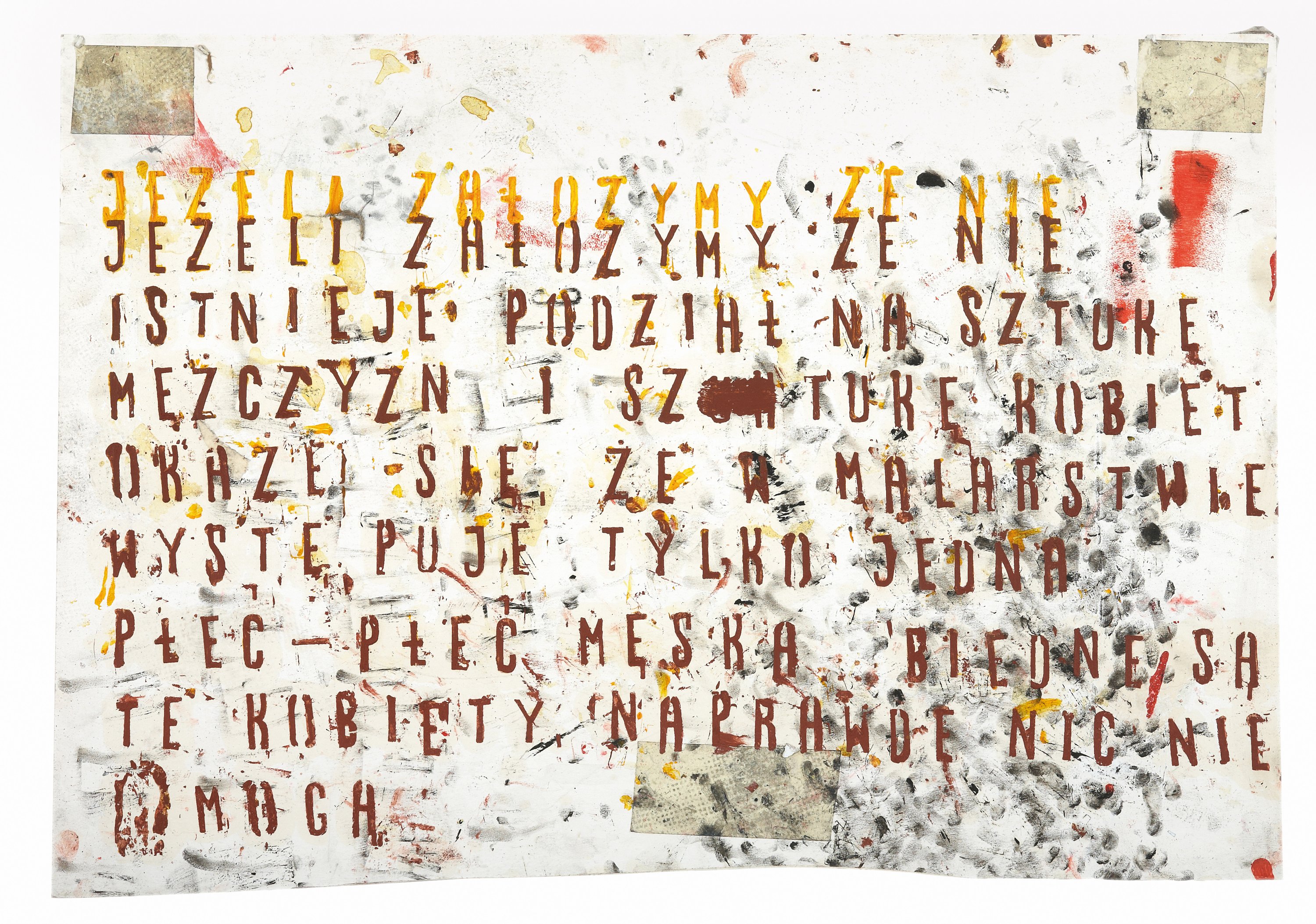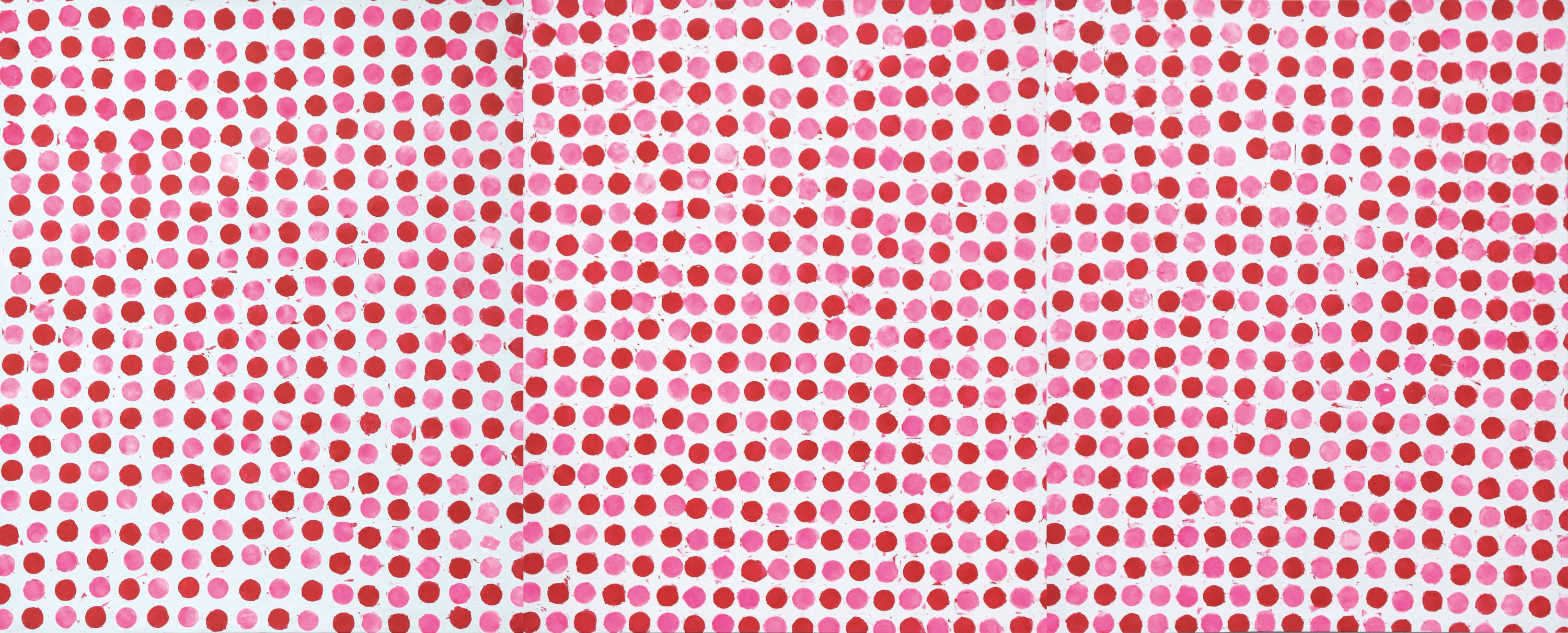Anna Okrasko
b. 1981, Warsaw
Painter, sculptor, creator of installations and artistic actions. She studied painting at the Academy of Fine Arts in Warsaw in Prof. Leon Tarasewicz’s studio, and at the Piet Zwart Institute of the Willem de Kooning Academie in Rotterdam. Her 2004 final diploma cycle My Professor Paints Stripes and I Paint Dots Because It’s More Girly is an explicit declaration of her artistic interests. She explores private, feminist, and social themes, as well as tropes of artwork production and the art market. She frequently uses text, simple form, and intense colour. She lives and works in Berlin.
untitled
FSP ING 0081
Works from the My Drawings Are a Kind of Diary series are the aftermath of Anna Okrasko’s exhibition Women Painters: Wives for Men Painters shown in 2003 in the hallways of the Academy of Fine Arts in Warsaw. Walls painted pink featured stencilled inscriptions, such as “Female artists don’t have pretty manicured hands. Painting department girls are dirty.” In a series of drawings on paper, Okrasko offers an ironic commentary on feminine tropes in art while exploring themes of intimacy as an area of inspiration for female artists of the second half of the 20th century, such as Tracey Emin or Sophie Calle.
untitled
FSP ING 0082
Works from the My Drawings Are a Kind of Diary series are the aftermath of Anna Okrasko’s exhibition Women Painters: Wives for Men Painters shown in 2003 in the hallways of the Academy of Fine Arts in Warsaw. Walls painted pink featured stencilled inscriptions, such as “Female artists don’t have pretty manicured hands. Painting department girls are dirty.” In a series of drawings on paper, Okrasko offers an ironic commentary on feminine tropes in art while exploring themes of intimacy as an area of inspiration for female artists of the second half of the 20th century, such as Tracey Emin or Sophie Calle.
My Professor Paints Stripes and I Paint Dots Because It's More Girly
FSP ING 0083
This piece from the artist’s graduation project, a graceful and ironic attempt at exploring the presence and position of women in the male-dominated art scene, has become part and parcel of the history of feminist art. Anna Okrasko leans towards humour yet again, this time to comment on the master–female pupil relationship. A female student of Prof. Leon Tarasewicz once wrote on the wall at the academy: “For a review with Tarasewicz, all you need is a pretty dress.” Several years later, the professor showed a number of his paintings at an exhibition abroad, all featuring a regular dotted pattern, all inspired by Andalusian flamenco dancer costumes.


